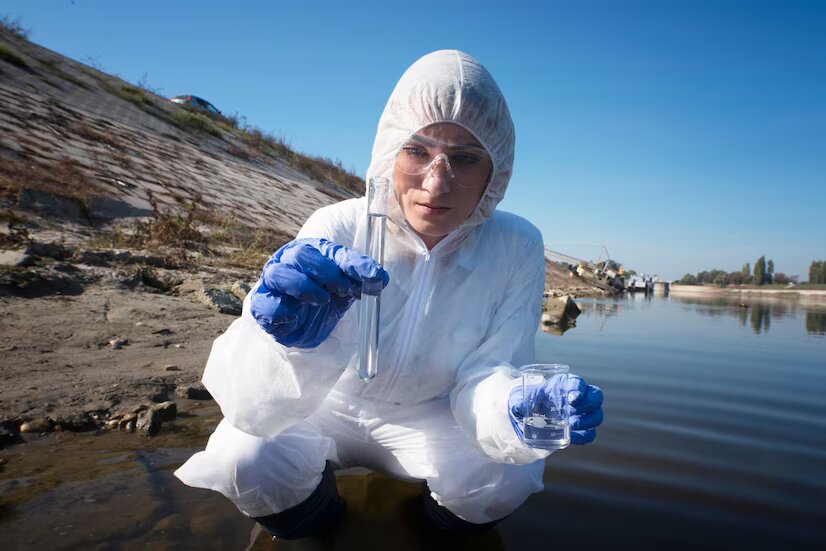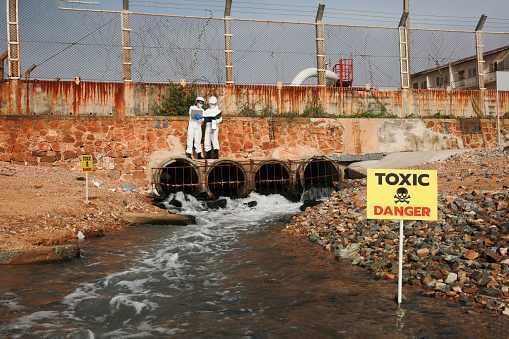Societies, in general, are not self-sustaining. You always have someone making decisions on your behalf. The optimum functioning of society needs certain rules. You select your leaders with the trust that they will take care of their people.
But do your leaders always walk their talk? In this era, leaders are more driven toward profits and short-term gains than the sustainable good of the masses.
Instances where basic sanitation gets overlooked by the government reflect their greatest negligence. In 2010, the UN recognized the right to water and sanitation as basic human rights. But the ground reality about the quality of water available to a large chunk of the population is stark.
Today, 844 million people around the world do not have access to safe drinking water. And close to 2.3 billion people had their right to sanitation violated. This negligence can be attributed to poor government policies and a lack of specific attention to certain groups.
The level of contamination of water varies in different places. Some sources get polluted with industrial chemicals, while some can have untreated sewage, to name a few. Let us look at the effect of contaminants on human health.
The Major Contaminants In Polluted Water

Close to 40% of the American population relies on groundwater, directly and indirectly, for their daily needs. It gets contaminated with chemicals, like insecticides and pesticides, and waste from landfills. Once the aquifer gets polluted, it can take hundreds of years for it to start functioning again.
More than half of the American population relies on surface water(from freshwater sources) for their daily lives. A survey by the U.S. Environmental Protection Agency states that about half of the rivers and streams in the US are polluted and deemed unfit for any human activity. The basic toxins that pollute surface water sources are nitrates and phosphates from farm waste and fertilizer runoff.
Plastic debris and oil spills present the biggest hazard to ocean water. Oil spills and leaks cause the water to absorb carbon pollutants. As a matter of fact, ocean water soaks up around a quarter of carbon emissions.
Toxic heavy metals like arsenic (As), mercury (Hg), and lead (Pb) can stay in the environment for many years. These metals harm aquatic life, and when consumed, they can result in fatal health issues. These toxins can result in neurological damage, congenital disabilities, and cancer.
Impact Of Prolonged Water Contamination
The effects of the drinking water crisis are barbaric. It has the worst impact on the human population worldwide. Problems with drinking water can have a lasting impact on the health of thousands, whether it is due to contamination of the water source or a shortage of water to drink. Here are two of the most prominent cases that have endured severe water contamination.
Camp Lejeune:
The Camp Lejeune crisis presents one of the worst examples of water contamination in US history. More than 1 million people got exposed to toxic water. Most of the affected were army veterans and their families. Moreover, it may take decades before the actual impact of the disaster is understood.
The biggest sources of contamination at Camp Lejeune were the spills and leaks from underground storage tanks and waste disposal sites. Symptoms of Camp Lejeune Water Contamination point to a number of life-threatening diseases like adult leukemia, aplastic anemia, cancers of the bladder, kidney, and liver, and Parkinson’s diseases.
The victims have been filing the Camp Lejeune Lawsuit to defend themselves against severe financial loss and human suffering. Law firms like TorHoerman Law, LLC have been working to assist Camp Lejeune Lawsuit victims and seek compensation.
Flint Water Crisis:
April 2014 saw one of the worst examples of Government negligence and cover-up in US history. The cash-strapped municipal government of Flint switched its water supplier to cut costs. But the new source of water was contaminated with high levels of lead.
The immediate pleas of the local residents were dealt with negligence and lies. It took the residents one full year to realize the gravity of the situation. The blood level of lead in many children had shot up by 100%.
According to the state-established Michigan Civil Rights Commission, the inadequate government response to the Flint catastrophe was “a product of institutional racism.”
Conclusion
Profits are much more important than responsibility today. There are laws to safeguard water for human use, viz., The Safe Drinking Water Act (SDWA) of 1974, and the Clean Water Act. But the misuse of power, tweaking of rules, and taking the masses for granted have spelled severe long-term crises.
Read Also:



























